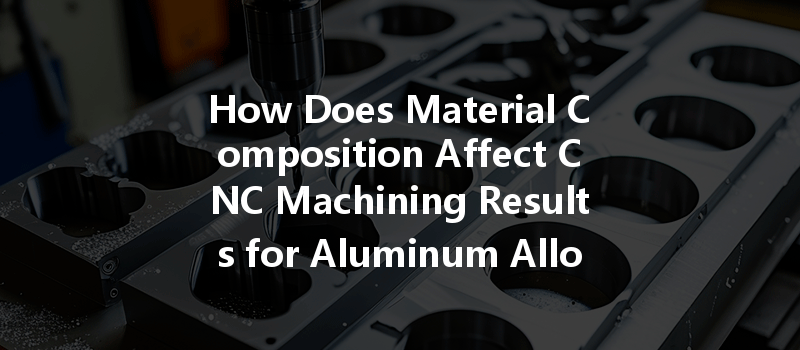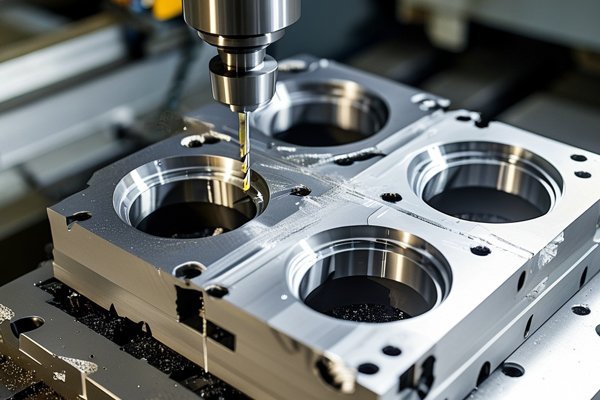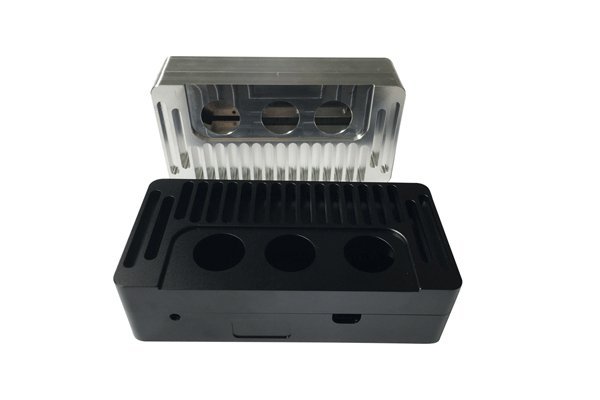Have you ever wondered why some CNC machined parts come out perfect while others face challenges like cracking or poor surface finish? According to a recent survey by the International Journal of Advanced Manufacturing Technology, approximately 25% of failures in CNC machining processes are attributed to incorrect material selection and composition. This striking statistic emphasizes the importance of understanding how material composition affects CNC machining results.
In this blog, we’ll explore the nuances of material composition in CNC machining, particularly when it comes to aluminum alloys and other materials. By uncovering the specifics of how different compositions can impact machining results, we aim to provide you with a detailed guide to optimizing your CNC processes.
Understanding CNC Machining
Before diving into how material composition affects machining results, it’s vital to understand what CNC machining is. Computer Numerical Control (CNC) machining is a subtractive manufacturing process that utilizes computerized controls to dictate the movement of machinery and tools. This method can precision-manufacture complex parts, making it extensively used in various industries, including aerospace, automotive, and medical systems.
Key Benefits of CNC Machining:
The Importance of Material Composition
Hardness is one of the most critical factors influencing CNC machining. For example, aluminum alloys like 6061 and 7075 vary significantly in their hardness and machinability. While 6061 is known for its excellent machinability, 7075 is much harder and can be more challenging to work with.
Solution: When selecting materials, always consider the hardness readings and how they will impact tool wear rates. For softer materials, you may employ faster feeds and larger depths of cut, while harder materials may necessitate slower speeds and special tooling.
Aluminum alloys consist of various alloying elements—e.g., silicon, magnesium, copper, and zinc—that can significantly influence machining behavior. For instance, the presence of copper in 2024 aluminum can improve machinability but may lead to issues like surface cracking during machining due to its sensitivity to heat.
Solution: Conduct preliminary tests to understand how different alloying elements react during the machining process. Whether through cutting tests or simulations, this knowledge can help predict and mitigate issues.
Material thermal properties affect how materials behave during machining. Materials with high thermal conductivity can dissipate heat quickly, which is essential for maintaining tool life and minimizing thermal deformation.
Solution: Implement appropriate cooling techniques, such as flood cooling or mist cooling, to manage heat generation. Understanding the thermal expansion characteristics of your material will also allow for adjustments in tool paths to compensate for potential distortion.
Ductility refers to a material’s ability to deform under stress without cracking. In CNC machining, higher ductility is essential for materials subjected to complex geometries. While aluminum is generally ductile, its composition can alter this property.
Solution: Use ductile materials for complex or high-stress parts and apply the appropriate machining strategies—such as peck drilling and low-speed cutting—to minimize stress concentrations.

The internal grain structure of a material affects its strength, toughness, and machinability. Materials with fine grain structures tend to have better mechanical properties compared to those with coarse grains.
Solution: To manipulate grain structure, consider processes such as heat treatment or cold working before CNC machining. Doing so can enhance the material’s performance and lead to better machining outcomes.
Evaluating Composition for Various Materials
Aluminum Alloys
6061 Aluminum: Known for its good mechanical properties and excellent corrosion resistance, this alloy is often the go-to choice for various machining applications. However, it’s essential to choose the right conditions to maintain its properties throughout the machining process.
7075 Aluminum: This alloy delivers high strength but poses challenges due to its lower machinability and propensity to crack under certain settings. Builders should use specialized tooling and strive for optimal speed and feed rates.
Stainless Steel
Stainless steels exhibit various grades, each with its unique composition affecting machinability. For instance, 316 stainless steel is known for its excellent corrosion resistance but can be challenging to machine due to work-hardening properties.
Solution: Choose high-speed steel or carbide tools and incorporate effective cooling strategies when machining harder stainless alloys to mitigate work-hardening.
Plastics
Plastics, such as polypropylene (PP) and polyoxymethylene (POM), can behave unusually due to their low melting points.
Solution: Slow machining speeds and high feed rates often yield better results. Keep an eye on material melting to prevent chips from sticking to tools.
Future of CNC Machining: Innovations in Material Composition
As technology advances, we see the emergence of innovative materials that affect CNC machining outcomes. Developments in composite materials, for instance, present intriguing challenges and opportunities. The blending of metal with polymers can yield lightweight yet robust materials that may transform CNC machining.
Furthermore, additive manufacturing technologies may influence CNC processes as hybrid methods emerge, combining the strengths of various techniques.
Understanding the relationship between material composition and CNC machining results is critical for any manufacturer striving for excellence. From the hardness of alloys to the ductility and grain structure, each aspect plays a crucial role in determining a machining operation’s success.
As industries continue to evolve and implement advanced materials, staying informed and adapting your CNC processes will become increasingly vital. This blog serves as a guide to highlight the importance of meticulous material selection and its far-reaching consequences on the CNC machining process.
Remember, the right combination of materials and machining techniques can lead to significant improvements in quality, efficiency, and ultimately, competitiveness in the ever-evolving manufacturing landscape.






